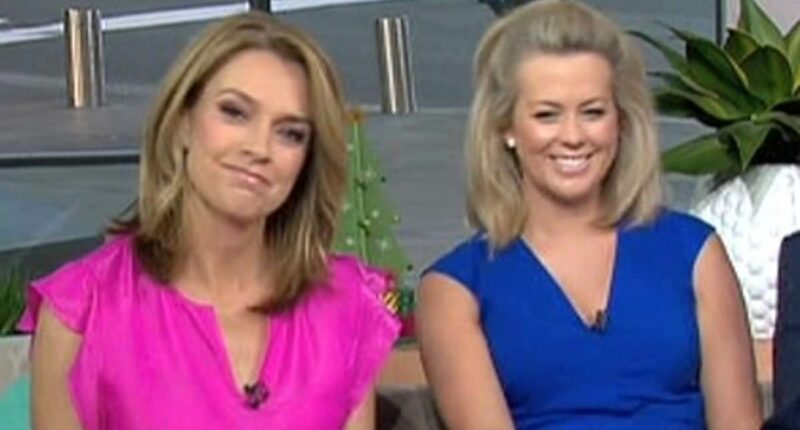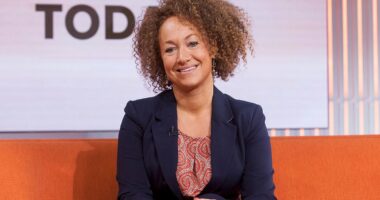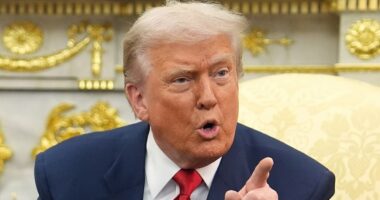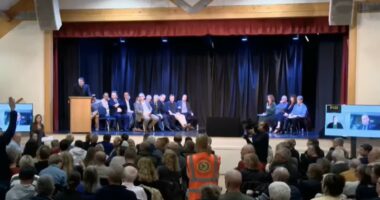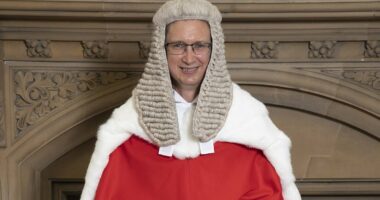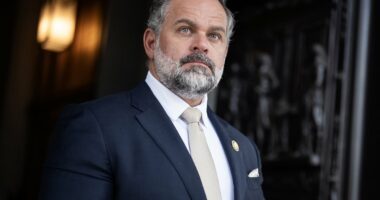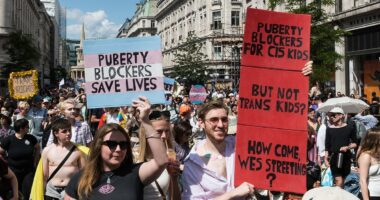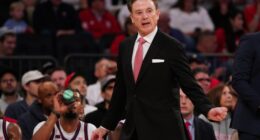Share this @internewscast.com
The Liberal Party at the federal level is facing a crisis that runs deeper than many of its members are willing to acknowledge.
Recent election figures paint a stark picture: post-2025, the Labor Party controls 94 out of 150 seats in the House of Representatives, while the Coalition has dwindled to a mere 43 seats. Of these, only 18 are held by Liberals independently, without the support of the Queensland LNP or the Nationals.
This scenario transcends the usual midterm slump; it signals an existential challenge for a party that once saw itself as the country’s dominant political force.
The primary issue is structural. The federal Liberal Party’s moderate faction has been severely weakened over time. This decline didn’t happen overnight; it was the result of the teal movement’s rise in 2022, which only solidified in 2025 under the leadership of Peter Dutton, who oversaw the party’s most significant electoral loss.
This federal debacle was compounded by disastrous performances at the state level.
In Western Australia, the Liberals were relegated to a minor party status after suffering crushing defeats, holding just two seats in the 59-seat Legislative Assembly in 2021, and only managing to increase this to seven in the most recent state election.
A similar drubbing is on the cards for the Liberal opposition in South Australia at the next state election, to be held in March next year.
In Victoria, Liberals have been at war with themselves and out of power for most of the last three decades – although there are some potential green shoots on the horizon now. On the Australian mainland, Labor are in power in every state and territory except Queensland, where the Nationals dominate the conservative state government.


The big political news from the end of last week was NSW Opposition Leader Mark Speakman (left) resigning, then Kellie Sloane (right) emerging victorious from the party room. But state leadership changes won’t change the fact the Liberals, on a federal level, are dragging the party back to the Stone Age and rendering it unelectable, writes Peter van Onselen

Sloane (left alongside, L-R, Sam Armytage, Andrew O’Keefe and Mark Beretta on Sunrise) used to be a TV journalist for Nine and Seven before making a tilt into politics
The crisis is hard to fix because those left in parliament are a product of the recent failures, leaving the parliamentary Liberal Party unrepresentative of the wider Australian voting population, especially in the major cities.
Federally, the Liberals have lost seat after seat in their traditional business and professional heartlands over the past two elections. Electorates like Kooyong, Wentworth, Mackellar, Warringah and Curtin have all fallen to teal independents, campaigning on climate action, integrity and gender representation.
Those independents – all female – are well-credentialed and backed by Climate 200 money and sympathetic business donors, entrenching their dominance over multiple elections. The teal rollback that some in the party complacently expected at the 2025 election simply didn’t materialise. The only teal loss came in the Victorian seat of Goldstein, while teals won the once-safe Sydney seat of Bradfield off the Liberals.
The returning Liberal MP in Goldstein, Tim Wilson, was one of the moderates on the losing side of the recent party decision to dump net zero and pledge a willingness to subsidise coal investments. This will make it doubly hard for him to retain his seat next time.
The only other metropolitan seat the Liberals now hold federally is the shire electorate of Cook, which is classified as marginal. Even the once-safe north shore electorate of Berowra is now held with a margin of just 1.3 per cent. Its representative, Liberal frontbencher Julian Leeser, also a moderate who argued against dumping net zero, faces an uphill battle to retain his seat. Remember: Berowra used to be one of the safest Liberal electorates in the country.
The hollowing out of city-held Liberal seats has clear consequences inside the federal party room. The MPs who survived are disproportionately from Queensland LNP territory, peri-urban fringes, and more conservative regional areas – not from the blue-ribbon metropolitan seats that once anchored the party’s identity. The internal ballast has therefore shifted.
Remaining moderates are too few in number and too marginal in influence to shape policy direction – they can only complain from the sidelines. The centre-right, business-friendly Liberal Party of old has been replaced by something narrower and more culturally combative – closer in instinct to a protest movement than a broad-based governing party.
At the same time, the internal membership base of the Liberal Party has become less representative of the broader community. This has been well-documented over recent years via branch-stacking scandals involving religious groups in Victoria and South Australia, and worries about Pentecostal or hard-right factions infiltrating branches as overall party membership declines.

Liberal MP for Goldstein Tim Wilson was one of the moderates on the losing side of the recent party decision to dump net zero. This’ll make it doubly hard for him to retain his seat next time

Julian Leeser (centre), also a moderate who argued against dumping net zero, faces an uphill battle to retain his seat of Berowra – once one of the safest Liberal electorates in the country
That doesn’t mean every conservative Christian member is a problem. It does, however, mean that the pre-selection pool has skewed towards candidates whose priorities are out of step with the economically centrist, socially liberal professionals who used to vote Liberal as their natural choice.
When the people who choose Liberal candidates look less and less like the voters the party needs to win back, you get a self-reinforcing spiral of irrelevance.
Business has responded accordingly. Corporate Australia no longer treats the Liberal Party as its default investment. This shift has been reinforced by donation disclosure laws outing anyone who supports one side of politics over the other.
The big end of town now hedges its bets between Labor, the Coalition and favoured independents. Climate-conscious business figures have tipped millions into Climate 200 and teal campaigns since 2019, with Atlassian and other tech and finance money backing candidates whose entire pitch is that the Liberals abandoned serious climate and integrity politics.
Some big resource and industrial donors have gone the other way, increasing their bets on the Coalition. But the overall picture is of a business community that no longer sees the Liberal Party as the uncontested party of economic competence. It now spreads its money across a much more fragmented political marketplace.
The electoral map that emerged from the 2025 election underlines how dangerous this is for the Liberals. Labor’s 94 seats come from across the federation: 28 in New South Wales, 27 in Victoria, 12 in Queensland, 11 in Western Australia, seven in South Australia and four in Tasmania. Labor holds all the seats on offer in the Northern Territory and the ACT.
The Coalition’s 43 seats are heavily concentrated in Queensland (16) and the non-metropolitan parts of other states, with just six Liberal seats left in both NSW and Victoria, and none in Tasmania.
At the last election, Liberal rising stars in city-based electorates, such as Keith Wolahan and James Stevens, lost their seats. And of course, the Liberals continue to have a gender problem in their representation, now exacerbated by the reality that leader Sussan Ley is on borrowed time, soon to be ousted by one of two conservative challengers circling, Andrew Hastie and Angus Taylor.
The optics of that mercy killing – when it happens – will be its own problem to manage, quite apart from what it tells us about the rightward shift of the party.

At the last election, Liberal rising stars in city-based electorates, such as Keith Wolahan (pictured) and James Stevens, lost their seats – casualties perhaps of the Liberals turning their backs on issues that inner-city voters care about and shifting towards culture wars
Labor can plausibly lose a swag of Queensland seats and still hang on to majority government by holding its gains in WA, SA and outer-suburban NSW and Victoria. The Liberals, by contrast, cannot form government without heavy reliance on Queensland, plus a recovery in the very metropolitan seats where they are at their weakest. Meanwhile, teal electorates show few, if any, signs of contemplating a return to the Liberal fold.
The quirk of the post-Kevin Rudd era, the old idea that Labor needed a Queensland landslide to win federally, has been turned on its head. Labor now governs despite trailing the Coalition in seats in Queensland, because it dominates the mainland capitals. The Coalition’s path to power runs through places where its brand is now toxic, while its heartland state of Queensland is less and less representative of the rest of the country.
The Queensland LNP is structurally more Nationals than Liberal. It is a merged party with a heavy regional footprint and a premier whose power base is in the Gold Coast and the regions, not in inner-city Brisbane. That might be enough to anchor a successful state government, but it doesn’t solve the Liberals’ national problem of reconnecting with inner-urban professionals.
Which brings us to the one realistic pathway back for the Liberal Party: state-level regeneration. This is where moderates still exist in meaningful numbers, and where the business community hasn’t entirely walked away from the right-wing major party.
Victoria – the state that has been a rolling disaster for the Liberals for decades – has finally installed a woman as leader in Jess Wilson, who has a fighting chance at the next election against a Labor government that Victorian voters are crying out to replace, if only the alternative can appear credible.
A first-term MP for Kew with a background at the Business Council of Australia, and a former adviser to Josh Frydenberg, Wilson is at least plausibly in tune with the small-l liberal, pro-business tradition the party needs to rediscover.
Whether she can impose discipline on a notoriously fractious state division is an open question, but her elevation at least provides some hope.
In NSW, the Liberals remain out of government but not out of contention. The state division is still more recognisably moderate than its federal counterparts, and it has held the line on policies like net zero that federal Liberals have been busily walking away from. Yet even there the brand is weakened, and the opposition is struggling to cut through against a Labor government that has avoided missteps.



At the highest level, Sussan Ley (centre) is on borrowed time, soon to be ousted by one of two conservative challengers circling, Andrew Hastie (left) and Angus Taylor (right)

In a glimmer of hope for the party, Victoria – the state that has been a rolling disaster for the Liberals for decades – has finally installed a woman as leader in Jess Wilson (right), who has a fighting chance against a Labor government that Victorian voters are crying out to replace
Leadership instability now looms in Macquarie Street as well, with Mark Speakman stepping down last week after faltering in the face of rumours that Wahroonga MP Alister Henskens was after the leadership.
Former journalist and Vaucluse MP Kellie Sloane has taken over, emerging victorious from the party room at NSW Parliament House on Friday morning. Ley called her an ‘outstanding young woman’, despite her being 52. A day earlier, Speakman endorsed her on the way out the door as a ‘fantastic leader’ and ‘someone of enormous talent’.
Talent aside, defeating Chris Minns‘ Labor government seems like a pipe dream, especially in the context of the brand damage being done to moderate causes by the federal Liberals. The next NSW state election isn’t due until early 2027 anyway.
Elsewhere, the story is bleak. In South Australia, Vincent Tarzia has the thankless task of rebuilding a demoralised opposition after the Marshall government’s defeat.
In Western Australia, former Channel Seven sports announcer Basil Zempilas has inherited a party that only just clawed its way back to official opposition status after the near-wipeout of 2021, and still holds just over a handful of seats in a lower house dominated by Labor.
The WA Liberal brand remains badly damaged among urban professionals and public sector workers alike. These state branches are not launching pads for a federal revival. They are barely surviving now.
The exception, as noted, is Queensland, where David Crisafulli now leads an LNP government riding high in the polls. But Queensland Liberalism is not the solution to the federal Liberals’ crisis. If anything, it is part of the structural imbalance that caused it.

Tough-on-crime Queensland Premier David Crisafulli leads the only state Liberal brand that isn’t struggling – but Queensland Liberalism is not the solution to the federal Liberals’ crisis
The political culture up north is more provincial, more populist and less concerned with the kinds of climate and integrity issues that animate voters in inner Melbourne, Sydney’s north shore or Perth’s western suburbs.
The more the federal party room becomes a Queensland-plus-the-regions operation, the harder it is to persuade disillusioned teal and Labor swing voters that the Liberals have heard their concerns. These voters don’t watch Sky News after dark, from which the narrowing federal base of the Liberal Party seems to take its cues.
Overlaying all of this is the simple fact that federal politics dominates the way voters think about parties. State oppositions can moderate, modernise and even win office – yet their success does not automatically repair the national brand.
The average voter knows who the prime minister is and, vaguely, who the opposition leader is. They are much less likely to be across the detail of state Liberal leaders, especially in opposition.
Ley’s struggles define the Liberal Party, and those struggles are acute. The latest Redbridge polling has the Coalition’s national primary vote collapsing to 24 per cent, with One Nation up to 18 per cent and Labor on 38 per cent.
When a formerly major party is within striking distance of being overtaken on the right by a protest outfit – remembering that the low Coalition vote combines support for Liberals and Nationals – it is staring down the barrel of long-term decline.
Could all this be swept aside by a big swing driven by cost-of-living pressures? Of course it could. Governments wear incumbency like a crown of thorns when the economy turns sour.
If inflation bites again – as it is starting to – voters may decide to punish Labor irrespective of how unimpressive the opposition looks.

‘The Coalition is no longer the natural party of government. It is a party increasingly reflective of its shrinking membership base, rather than of the broader Australian community it has to convince to give it another chance to govern,’ writes PVO
In a two-party preferred system, someone has to be on the other side of the ledger when the ‘it’s time’ mood returns. A chaotic or hollow opposition can still fall over the line on a protest vote if the government is unpopular enough. But that is not a strategy – it’s just hoping the two-party system will eventually bail out a declining major party.
Right now, that hope looks misplaced. The Coalition is no longer the natural party of government. It is a party increasingly reflective of its shrinking membership base (older, more religious, more distrustful of climate action and social change), rather than of the broader Australian community it has to convince to give it another chance to govern.
The federal party room is dominated by MPs whose instincts align more closely with the culture-war echo chambers of Sky After Dark and social media than with the practical concerns of business or the aspirations of younger urban-based professional voters.
Donors have diversified, voters have diversified, but the Liberal Party has narrowed.
If there is a way back, it will not come from another round of leadership musical chairs in Canberra, nor from doubling down on the culture wars in the hope of out-One Nation-ing One Nation. It will come, if it comes at all, from state divisions where moderates still have a foothold and where business has not completely deserted the field. Those state Liberals will need to win – and win convincingly – on platforms that reconnect centre-right politics with climate responsibility, integrity, competent service delivery and a modern understanding of gender and culture. Only then will there be a pipeline of MPs who can repopulate the federal party room and drag it back towards the mainstream.
But it’s hard to have faith in Liberal Larry moderates in the best of times, much less the worst. They are as prone to factional fighting and niche issues as anyone. And for the most part, the superficiality of their CVs suggests policy depth isn’t a strong suit.
Restoring the credibility of the Liberal Party, especially in metropolitan areas, is a long-term challenge – and there is no guarantee it will succeed.
At the moment, it isn’t even trying; in fact, it’s moving further in the opposite direction.
In the meantime, Australian politics is stuck with a lopsided major-party system – at a time when the Labor government, federally, isn’t very good.
But in a two-horse race, you only have to beat the other horse, and the Liberal Party horse is lame.
